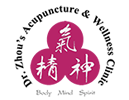Reiki is an ancient Japanese form of healing using light touch and hand positions. The word reiki comes from two Japanese words – rei, meaning higher power or universal force, and ki, meaning life energy. Loosely translated, reiki means universal or spiritually-guided life-force energy.
Practiced for thousands of years throughout Japan, China, Tibet and other Asian nations, reiki was “rediscovered” in the late 19th century by Dr. Mikao Usui, a Buddhist monk and educator, who used the therapy to heal the sick. In the 1930s, a Japanese-American woman, Hawayo Takata brought reiki to the West after she learned the practice from a reiki master in Japan. Today, reiki is used as a method of healing illness and reducing stress through light touch or, more commonly, by placing the hands near or above the body in specific positions or patterns. Through these positions, a reiki practitioner can correct energetic imbalances in the body, improving health and restoring a person’s energy levels.
How many types of reiki are there?
There are two main forms of reiki – direct-contact and distant. In direct-contact reiki, treatment is administered with the patient fully clothed, while the practitioner lightly touches designated areas of the body for approximately two minutes each. There are 13 standard hand positions in direct-contact reiki – three on the head, four on the chest and abdomen, and six on the back. Depending on the level of training, these areas may be subdivided into specific points of concentration. In distant reiki, a patient is not actually touched, but a reiki practitioner sends his or her energy into the patient. Distant reiki can be offered with the practitioner in the patient’s presence, or from great distances.
What’s a typical reiki session like?
The usual reiki session lasts between 45 and 90 minutes, depending on the conditions being treated. Reiki is usually performed with the patient lying on a table, and the practitioner standing behind the patient’s head. While performing hand positions, the reiki practitioner may not actually touch a patient, but simply hold his or her hands one to two inches above the patient’s body.
Different people may experience different sensations during treatment. Some patients have reported feelings of warmth, peace or tingling. Others have experienced cold feelings, or an intense emotional release. Some patients have even fallen asleep while being treated.
What conditions does reiki treat?
Although there are relatively few scientific studies that have documented its effectiveness, reiki is used to help treat everything from impotence to heart disease. In the U.S., reiki is typically used not as a primary form of care, but in conjunction with Western-based therapies. Most often it is used to reduce stress and tension as part of an overall wellness program.
Is reiki a form of traditional Chinese medicine?
Strictly speaking, no. Although reiki was originally practiced throughout Asia, it was “rediscovered” in Japan, and the characters used to create the word “reiki” are derived from two Japanese words. However, reiki is a recognized form of bodywork, and as such, an essential component of Asian healing.
Is it safe?
Yes. Reiki is a noninvasive procedure; at most a practitioner will touch a patient lightly during a treatment session. Because of its physical nature, however, a patient needs to find a practitioner with whom he or she can establish good rapport to get the most out of reiki.
How can I find a reiki practitioner near me?
Several state and national organizations offer directories or information on locating a reiki practitioner. Among the largest organizations are the International Center for Reiki Training and the International Association of Reiki Professionals.
